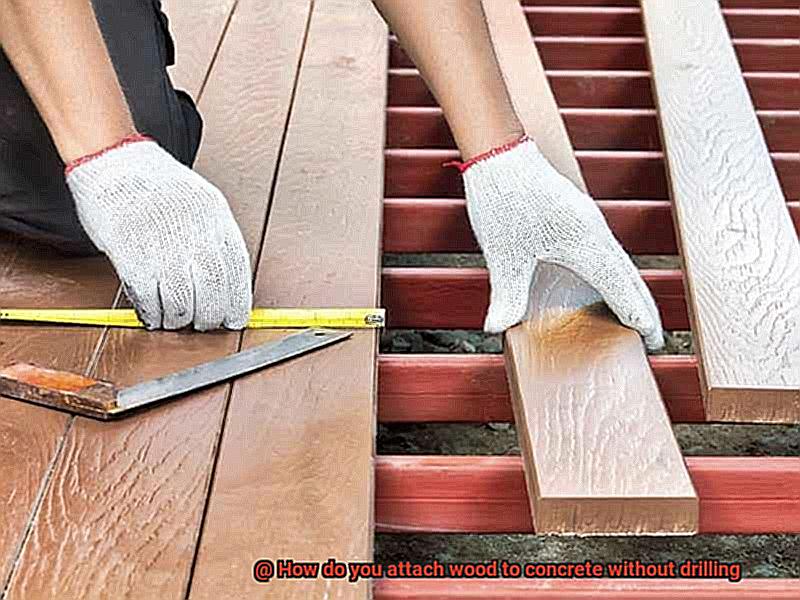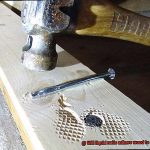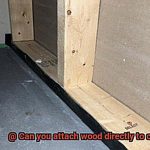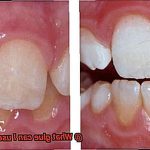Are you looking to add a touch of natural warmth to your concrete space with some wooden accents? Drilling into concrete can be a daunting task, especially if you’re not experienced with power tools. But don’t worry, we’ve got you covered. There are several methods that allow you to attach wood to concrete without drilling.
Whether you’re looking to create a chic wood accent wall, install a cozy wooden deck, or add some wood trim to your concrete patio or steps, these methods will do the trick. One such method is using adhesive anchors that utilize epoxy or other adhesives to bond the wood and concrete together. Another method involves using masonry screw anchors that can screw directly into the concrete and be used for attaching wood supports and frames.
You can also use a powder-actuated tool that shoots nails or fasteners into the concrete, which will hold the wood in place. In this blog post, we’ll delve deeper into each of these methods and provide easy-to-follow step-by-step instructions on how to attach wood to concrete without drilling.
No matter what your level of expertise is, these methods are simple and effective ways of transforming your cold and lifeless concrete space into a warm and inviting oasis. So let’s get started on bringing your vision to life.
Advantages of Attaching Wood to Concrete Without Drilling
Contents
If you’re looking for a safe, cost-effective, and versatile way to attach wood to concrete, then attaching wood to concrete without drilling might be just what you need.
One of the most significant advantages of this method is that it eliminates the need for power tools, which can be a safety hazard for those who are not trained to use them. This means that you can create a strong and durable bond between wood and concrete without putting yourself or others at risk. Plus, with less noise and dust generated during the process, you can work comfortably indoors or in areas with limited ventilation.
But that’s not all. Another great benefit of attaching wood to concrete without drilling is that it is a more cost-effective option. Traditional drilling methods require specialized drill bits and anchors that can be expensive. By using glue or adhesive products instead, you can save on these costs and complete your project within a smaller budget.
Moreover, this method of attachment doesn’t leave any unsightly holes in the concrete surface. This is particularly important for decorative concrete finishes where maintaining the surface’s appearance is crucial. With attaching wood to concrete without drilling, you can rest easy knowing that your finished product will look as sleek and polished as you envisioned.
Last but not least, this method of attachment is incredibly versatile. It allows wood to be attached to uneven or irregular surfaces that traditional drilling methods can struggle with. With adhesive products, you can get creative with your project and tackle even the most complex tasks with ease.
Types of Adhesives Suitable for Bonding Wood to Concrete
There are now adhesives specifically designed for bonding wood to concrete without any hassle. Let’s dive into the different types of adhesives that are suitable for this purpose.
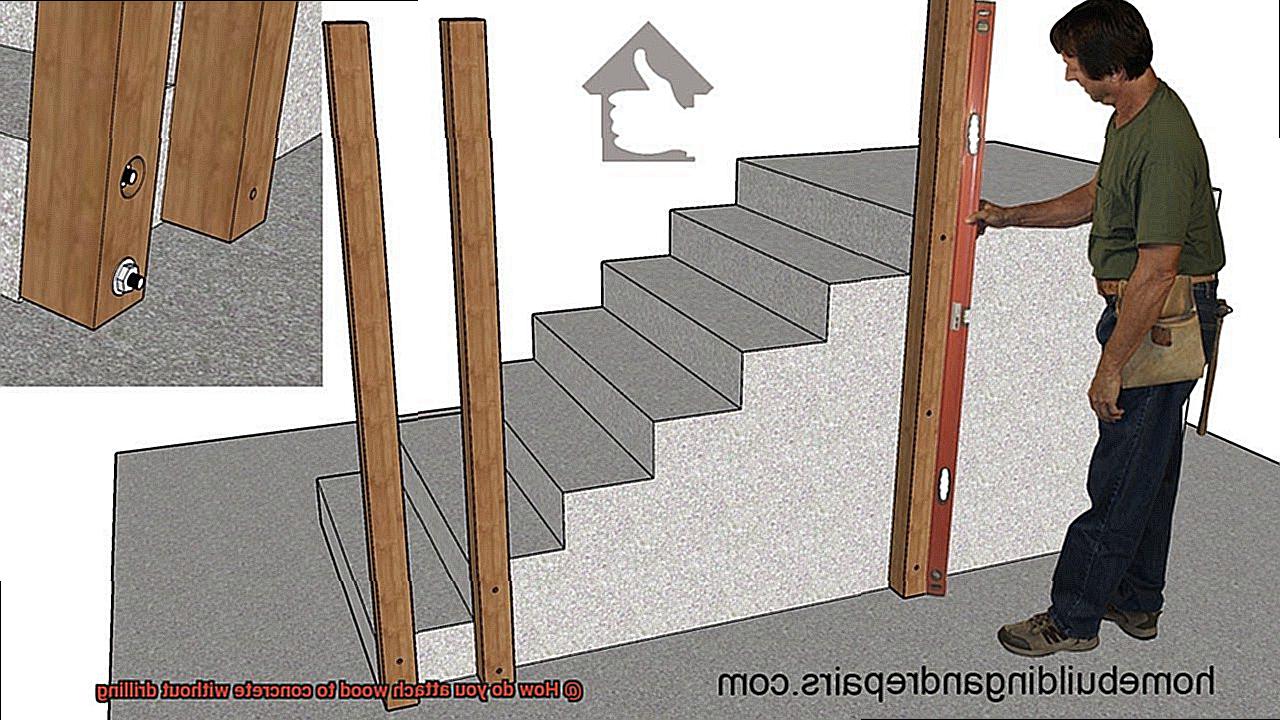
The first type of adhesive is epoxy, which is known for its unbeatable strength and durability. It is an excellent choice for attaching wood to concrete. However, epoxy can be challenging to work with as it requires meticulous mixing and application.

Another option is polyurethane adhesive, which is flexible and can bond dissimilar materials together. It also has excellent gap-filling properties, making it ideal for attaching wood to uneven concrete surfaces. However, it takes a bit longer to cure than other types of adhesives.
If you’re looking for a fast-curing option, acrylic adhesive might be the way to go. This easy-to-use adhesive works on a variety of surfaces, making it a versatile choice. However, it may not be as strong as other types of adhesives.
Lastly, there are hybrid adhesives that combine the strengths of two or more types of adhesives. These can offer a balance between strength, flexibility, and ease of use. Hybrid adhesives are a fantastic option if you want a strong and reliable bond between wood and concrete.
Your specific needs and preferences will determine the type of adhesive you choose. Just make sure to select an adhesive that is specifically designed for bonding wood to concrete and follow the manufacturer’s instructions carefully for best results.
Preparing the Surfaces for Bonding
A reliable and easy way is to use specialized adhesives. However, before applying any adhesive, it is crucial to prepare the surfaces properly to ensure successful bonding.
The first step in preparing the surfaces for bonding is to clean them thoroughly. Use a cleaning solution and a wire brush to remove any dirt, dust, or debris. Once cleaned, roughen the surface of the concrete using either a mechanical grinder or a chemical etching solution. The etching solution creates tiny pores that increase the surface area for bonding.
After preparing the concrete surface, apply a primer to improve adhesion. There are different types of primers available, such as epoxy primers and acrylic primers. Choose the right primer according to the type of adhesive you are using. The primer acts as a bonding agent that helps the adhesive stick better to the surface of the concrete.
Moving on to the wood surface, sand it down to create a rough surface that provides better adhesion. The wood should also be cleaned and wiped down with a solvent to remove any oils or residues that may interfere with bonding.
Applying the Adhesive Properly
Adhesive can be a fantastic solution, but it’s crucial to apply it correctly for a robust and long-lasting bond. As an expert in this area, I’ve compiled some research notes to guide you through the process.
First, ensure that the concrete surface is clean and free of debris or dust. Use a brush or vacuum cleaner to remove any loose particles. Then, apply a concrete primer to the surface to enhance adhesion. Allow the primer to dry entirely before proceeding.
Next, apply the adhesive to both the wood and concrete surfaces. It’s essential to use an adhesive that works for both materials. Follow the manufacturer’s instructions on how much adhesive to use and how long it takes to set.
Once you’ve applied the adhesive, press the wood firmly onto the concrete surface. You can use clamps or weights to keep the wood in place while the adhesive sets. But remember, it’s crucial to be patient and give the adhesive enough time to cure thoroughly before removing any clamps or weights.
It’s worth noting that temperature and humidity can impact how well the adhesive works. Check the manufacturer’s recommendations for temperature and humidity ranges.
Holding the Wood in Place
Thankfully, there are several effective methods that can provide a sturdy and durable hold.
One option is to use construction adhesive, which can be directly applied to the concrete surface before pressing the wood onto it. However, it’s crucial to use a strong adhesive that is specifically designed for bonding wood to concrete. Following the manufacturer’s instructions carefully is also critical in achieving a robust and long-lasting bond.

Another alternative is using mechanical fasteners that do not require drilling. Concrete nail guns, for instance, use special nails designed to be driven into concrete without pre-drilling. While nail guns are readily available for rent at most hardware stores and relatively easy to use, they require some skill and experience to use effectively.
Wedge anchors or expansion bolts are another mechanical fastening option that requires pre-drilled holes in the concrete. Once inserted, these bolts are tightened with a wrench, causing them to expand and create a secure hold on the concrete. Choosing the right size and type of anchor for your project is crucial, as is following the manufacturer’s instructions closely when installing them.
7m4EEi-pIe8″ >
Conclusion
In conclusion, attaching wood to concrete without drilling is a simple and effective way to transform your dull concrete space into a warm and inviting oasis. With various methods available, such as adhesive anchors, masonry screw anchors, or powder-actuated tools, you can easily attach wood to concrete without the need for power tools, making it a safer and more cost-effective option.
When it comes to selecting adhesives suitable for bonding wood to concrete, there are several options available, including epoxy, polyurethane adhesive, acrylic adhesive, and hybrid adhesives. However, before applying any adhesive, it’s crucial to prepare the surfaces properly by cleaning them thoroughly and roughening the surface of the concrete.
To ensure a robust and long-lasting bond between the wood and concrete surface, it’s essential to apply the adhesive correctly. Pressing the wood firmly onto the concrete surface and holding it in place until the adhesive sets completely will guarantee excellent results.

